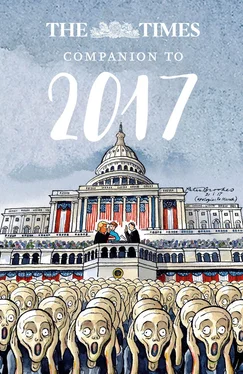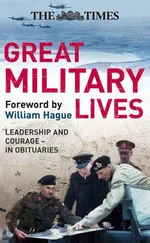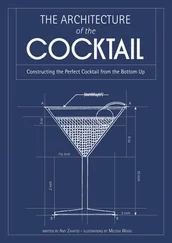Starting in the 1990s, MI5 began to release its files to the National Archives on a systematic and logical basis: releasing nothing that could affect national security, compromise the secrecy of other organisations or embarrass living individuals, but everything else, warts and all. MI5’s extraordinary role in the Second World War is now largely declassified, but last year the Security Service also released files on the spies Guy Burgess and Donald Maclean, whose escape to Moscow in 1951 was one of the most spectacular cock-ups in spy history.
The royal archives should be placed in the public domain in the same transparent way: material genuinely distressing to living persons could be excluded, but everything of political relevance should be released under the 30-year rule. This would hugely benefit the royal family too, by enabling its 20th-century history to be written on the basis of hard evidence rather than speculation and rumour.
That seems unlikely to happen soon, for the royal archivists seem more concerned about brand management, secret-keeping and damage limitation than history. Last year’s discovery of home-cinema footage showing a very young Elizabeth performing the Nazi salute (which any historian worth their salt would publish) prompted outrage among royalists and a promise to investigate how the material had been obtained from the royal archive.
The results of that investigation, if one ever took place, have never been revealed: a secret inquiry, into a secret archive, by a most secretive organ of state.
INSIDE BRITAIN’S ONLY TRANSGENDER CLINIC FOR CHILDREN
Louise France
NOVEMBER 5 2016
NINE-YEAR-OLD ASH skips across the main road, a blond ponytail swishing from side to side. She — Ash was born a boy but has wanted to be known as a girl since she was four — has just emerged from an appointment at the Tavistock and Portman Hospital’s Gender Identity Development Service (GIDS) in north London and what she really fancies is chicken and fries from the local KFC.
She’s jittery. A cocktail of relief and adrenaline. Ash is bright and she’s researched the facts (Google is useful like that). She knows about hormone blockers: monthly injections that will, if she is prescribed them, put her puberty on hold. She enjoys talking to the child psychotherapists and family therapists. They understand where she’s coming from. But sometimes they want to know how she feels, and that is tough to articulate when you’re not ten yet. You’re being asked to talk about big, embarrassing stuff like puberty when you don’t want to look at your body in the bath; when you’ve convinced yourself you are developing breasts although this is biologically impossible.
At least for now.
She tells the consultant that when she’s older she’ll have a womb transplant and have a baby. (She’s read about it online. “They do it in Sweden,” Ash says.) The consultant explains that it isn’t always straightforward, but that’s not what she wants to hear. When the questions feel too difficult, Ash, who wants to be a trans model when she grows up, gets teary and asks to leave the room.
It’s at home in southern England where she lets rip and it’s her mother, Terri, on whom she takes out the fear and confusion. Shouting, slamming doors. In the past she’s been taunted at school, beaten up, called a “she-male”. When she was seven she sent her mother suicidal texts. Sometimes family life revolves around how Ash feels from moment to moment.
GIDS at the Tavistock and Portman NHS Trust (or Tavi, as it’s known by locals in the leafy, affluent streets near by) is Britain’s only multidisciplinary clinic specialising in children and adolescents who are concerned that they were born the wrong sex. Eighteen years ago, when GIDS began, a team of five received about 30 referrals from children a year. By 2009 referrals totalled 96. In 2014 it was 697. This year about 1,419 children came for help, referred by GPs faced with a condition that they’ll most likely have very little experience of.
While, to put the figures into perspective, these numbers account for only 1 in 10,000 young people, the service is under huge pressure. Sixty new members of staff are about to start. Builders have been employed over the summer to carve up the office space in the Tavistock building, an incongruous, anonymous block with a statue of Sigmund Freud in the car park.
The average age of the young people who arrive in reception, with its gender-neutral toilet, is 14, but they are increasingly receiving inquiries from parents of children at primary school. Occasionally there are referrals for children as young as three. One concern is that if these children socially transition — dress as the opposite sex, change their names — at this age, what happens if they change their minds?
I meet Ash and Terri again at home two weeks later. Ash is just back from school, quiet and hungry. She desultorily kicks a football about in her uniform (T-shirt, short grey skirt) and disappears to her bedroom (cluttered, shocking pink). Make no mistake, she looks like a girl. I catch myself staring at her, searching for clues to her biology. Ash is one of the main characters in the first episode of an ambitious and revealing new Channel 4 documentary series — three years in the making — about the Tavistock. It’s directed by Peter Beard, who won awards for his last documentary, My Son, the Jihadi . The first episode focuses on GIDS. It’s the first time they have allowed cameras inside.
We sit in the back garden and her mother explains why she’s decided to let Ash appear on television. “I wanted people to see that my kid is not a freak,” she says. Terri has wholly taken on board Ash’s feminine identity: she lets her wear nail varnish and crimp her hair, although she draws the line at lipstick on school days. “She is not a boy in the wrong clothes; she is actually a girl in the wrong skin. I wanted people to see how hard this is — this is a massive thing for a little kid.”
Ask Ash about being born a boy and she makes sense of it by splitting off her masculinity. She says the male part of herself was an older brother “that died or fell off a cliff”.
“From the moment Ash could talk, she has been like this,” Terri says. “She wanted to have dolls and wear princess dresses.” At first she was not concerned. She had other children and they’d wanted to dress up. “It wasn’t an issue.”
At nursery Ash wore dresses. “I’ve never seen her play with a boy,” her mum tells me. She sat down to pee despite having brothers. When her father, a scaffolder — Ash’s parents split up when she was two — gave her trains for Christmas she refused to play with them. (Recently he has begun to accept Ash’s trans status, to the point of accompanying her to a meeting at the Tavistock. “I wouldn’t have her any other way,” he says in the documentary.)
Did Terri ever think, maybe my son is simply a girlie boy? Yes, she tells me. Her hunch was that Ash would grow up to be gay. “She just seemed to be an extremely camp gay man. And that was fine. We’re an open family. We have a lot of gay friends. It wasn’t an issue.”
Then, when Ash was four, she said: “Why do you keep calling me a boy? Why do you keep saying he? I am a girl. I am a she.” Terri remembers the moment vividly. Her distressed son was sitting on her lap in the living room, dressed in a Rapunzel dress with a wig. “She asked me, ‘Who is going to take my willy off?’ She wanted to know if I would take her to the doctors or would it fall off? That’s when I thought, this is a bit more than dressing up.”
Might Ash’s behaviour just be a phase? It’s common for children to experiment with gender roles. Terri explains that she has never once wavered. When school started, every morning was a battlefield. (Start talking about gender and you realise how traditional schools still are about the sexes: boys told to go on one side, girls on the other, unisex school uniforms uncommon.) “For the first year I tried to get her into the boy’s uniform, but she hated it. She’d be punching me, biting me, scratching me.” In the end, Terri asked the head teacher if Ash could wear a skirt and he agreed.
Читать дальше












